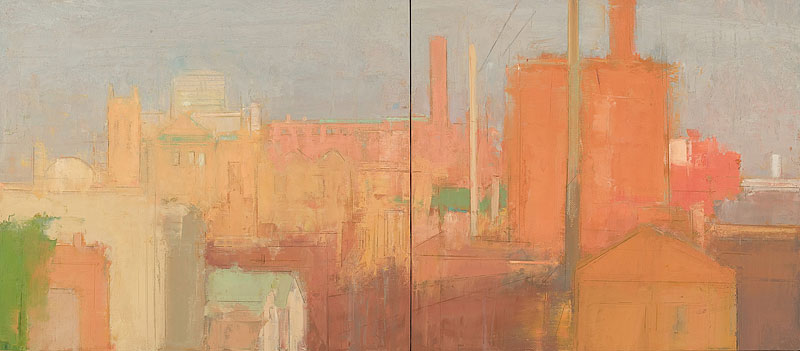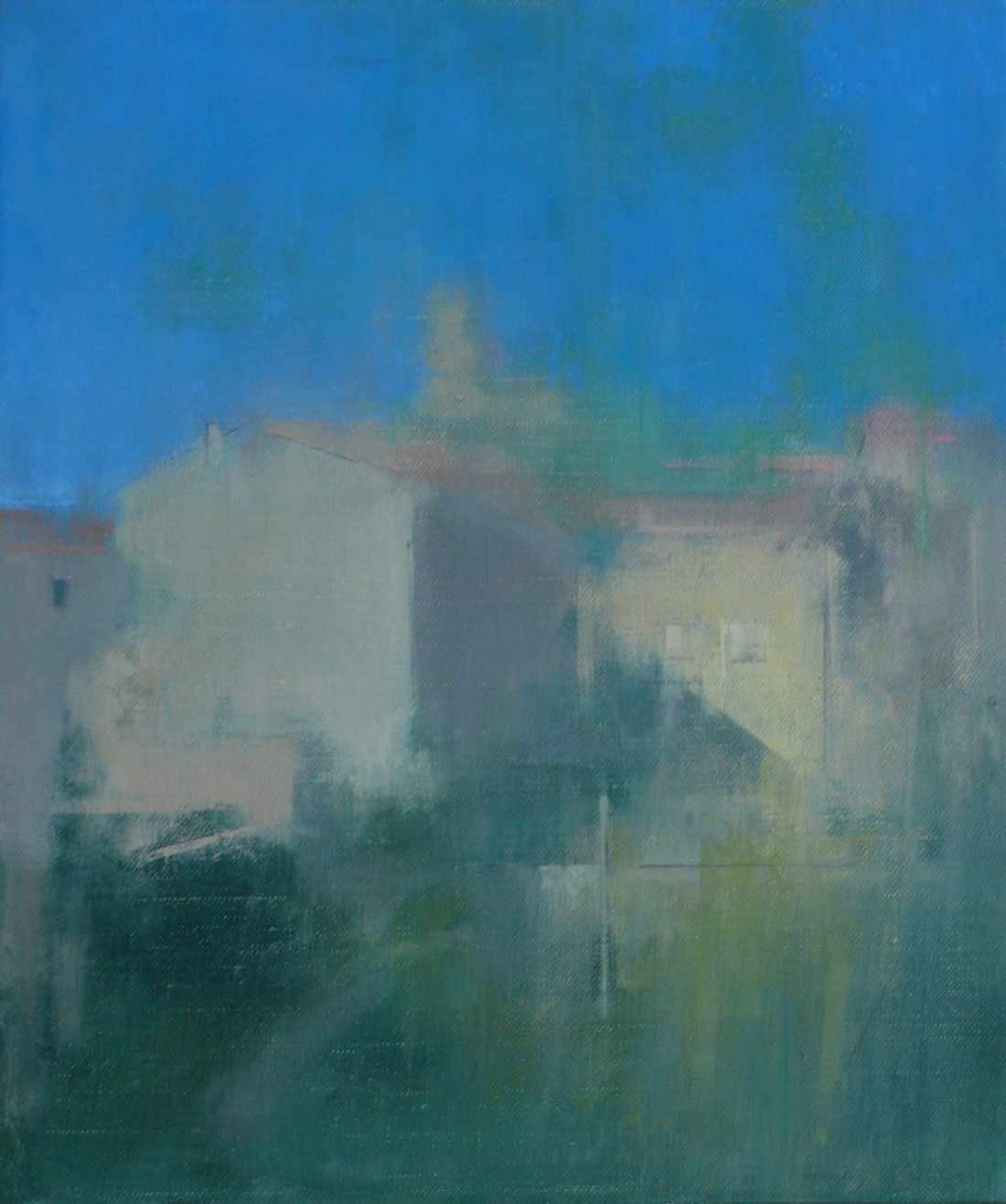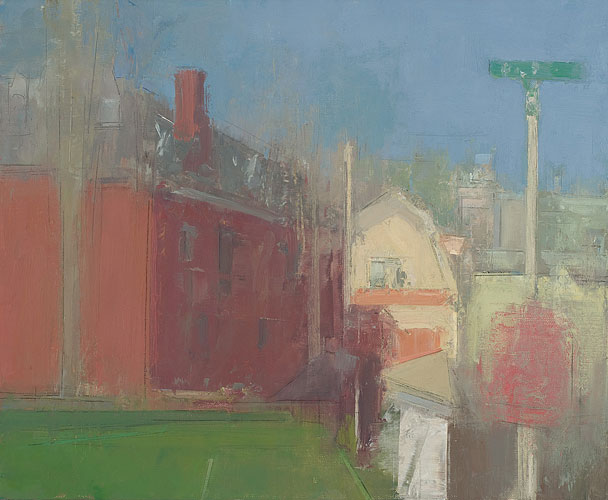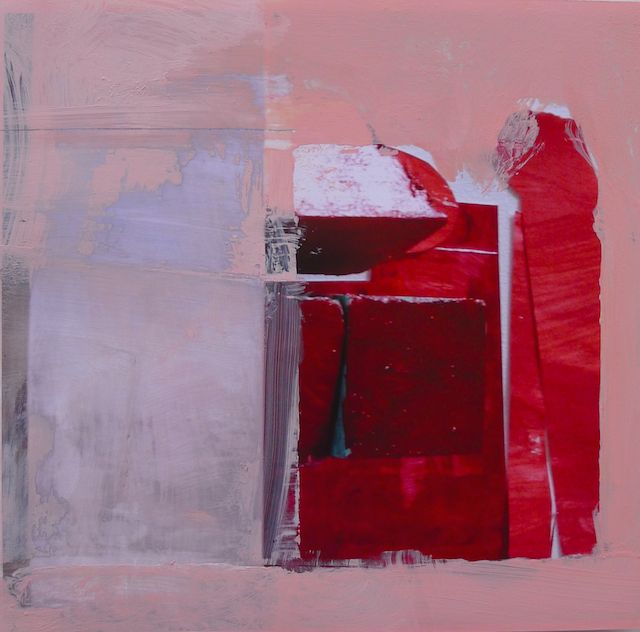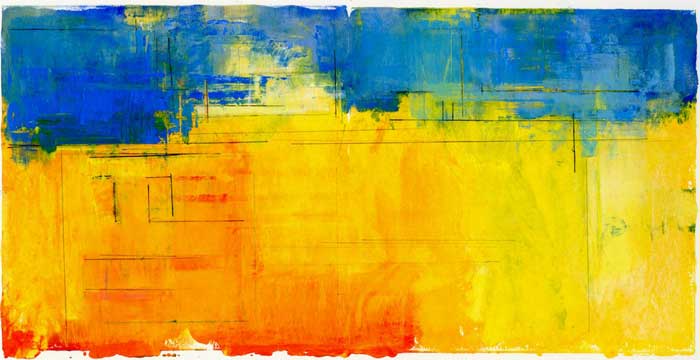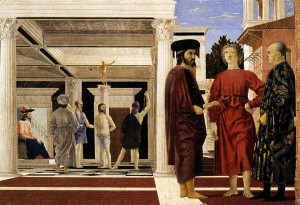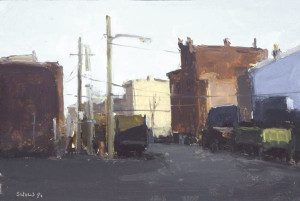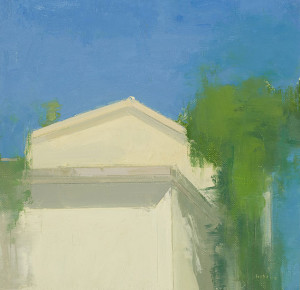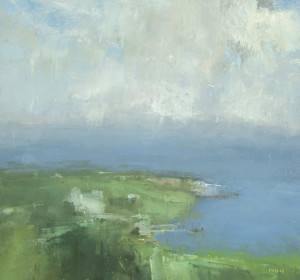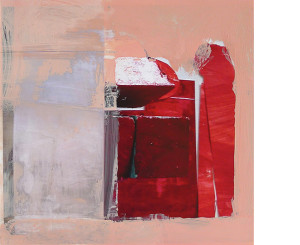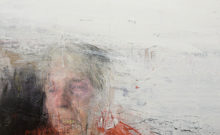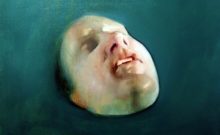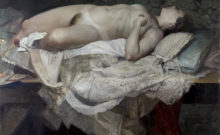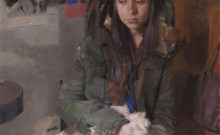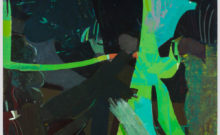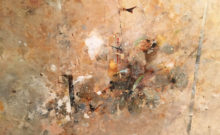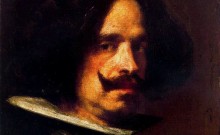Stuart Shils told me the following anecdote during my conversation with him. While on one of his summers in Italy with JSS (Jerusalem Studio School), he went to view Piero della Francesca’s painting The Flagellation of Christ with a group of his Israeli students from JSS. He had never seen the painting before and this was not a story that pulled him emotionally, yet he was massively knocked out and moved by the painting, by way of its abstract, formal presence. And, he was amazed to see the degree to which the group, for whom Jesus Christ and his ordeals was also not part of their cultural or emotional drama, was similarly moved, actually, hammered. How was it possible he asked, that students who didn’t know the ‘story’, who had no direct connection to the subject matter, could respond with extreme admiration and awe? Such is the power of design – of the intentional, abstract organization of color shapes and form within a rectangle, as in composition with notes in music, but here within two-dimensional space.
I find it a bit intimidating to write about Stuart Shils. His fluent and lucid conversation means that I don’t so much feel the need to interpret or analyse his words, more the obligation to record some of his thoughts as faithfully as possible.
Stuart Shils; the beginnings
Stuart Shils was born in 1954 in Philadelphia, PA, and at first studied architecture, art history and literature. He took drawing classes at the former Philadelphia College of Art (PCA) with the artist Francis Tucker, whom advised Shils to study Painting at the Pennsylvania Academy of the Fine Arts (PAFA). It was here that Stuart completed his academic training and where he now teaches.
Stuart Shils is an eclectic painter. His journey began with influences as diverse as the automatic drawing of Max Ernst, the American cartoonist Robert Crumb, the Dadaist school, architecture and literature. He particularly remembers a course he did with Doris Staffel (whom as a young woman was a student and friend of Mark Rothko) in the summer of 1974. She was a gifted and inspiring teacher and even though Staffel’s own work was abstract, she taught from direct observation in the life class. Yet she made it clear that a painting is not equivalent to nature and that it’s own life is an artificial arrangement of marks and notations, a careful organization of abstract color shapes established by a ‘hand’ with a brush, on a two dimensional surface, very much in reference to things ‘seen’ but not an imitation or copy of those things
Despite this eclectic mix of early influences, Stuart Shils remembers himself at PAFA (from 1977-1982) as a conservative, figurative, still-life and portrait painter working with a limited palette. And while a student at PAFA he believed that good painting had died with Courbet.
The light of Italy
In the summer of 1981 Stuart Shils went to Italy while on a student traveling scholarship, and spent half of his time visiting museums, and the other half out and about making small gouache and pencil drawings. These works were done spontaneously, directly from observation and he thought the immediate results were too rough and quite poor. But on opening his sketchbooks back in the States a couple of months later, he discovered the freshness and expressive power hidden in those works, and this raised huge questions about who he was as a painter and how to integrate new influences and thoughts.
The final school year brought confusion and reflection, but after graduations, now removed from the too familiar context of the school, he left behind oil painting and spent many months months making urban architectural drawings in ink and in gouache, always out of doors during the day and nights, rediscovering the hypnotic power of a direct encounter with form and colour, again by way of direct observation. He returned to oil painting and quickly became addicted to working outside or through windows, and such was his life between 1982 – 2011. With the exception of monotype which in 1998 became a studio pursuit, he always worked from direct observation of nature. For many years his focus was painting on the streets of Philadelphia, engaged with an urban architecture, but always making an annual voyage to the Midwest to paint in farmlands.
The Irish adventure
However in 1994 Shils received an invitation to work on the northwest coast of Ireland, in and around the village of Ballycastle and he fell in love with the place and returned for 13 long summers. The changeable conditions of the Irish coast meant a huge, dramatic departure from the stable, urban scene to which he was accustomed. This complete contrast in setting, in which often, sun, rain and storms could all be observed in a single session, both surprised and captivated him. For thirteen consecutive summers he returned to that coastal village in County Mayo, wrestling with the ephemeral beauty of those rolling fields, sea and lightspace.
He wanted to paint everything, but how is it possible to work outside at night or during extreme rain and storms? Monotype emerged as a way of addressing the visual power of all that, using drawings made under the raincoat or in the car or behind a window, then recombining and transforming it all back in his Philadelphia studio months later using his residual memory and the reference provided by the drawings. Monotypes opened the door to the possibility of working effectively with one’s back to nature, with some distance from that massive theater of information always hurling itself in the face and it initialed a different way of thinking about painting as well. His painting became less direct and more unpredictable, and concerned not so much with naturalistic description as much as with memory and emotion, a kind of distillation of visual perception.
The relentless pursuit
Lately Stuart Shils has been obsessed with making photographs taken with both a pocket sized digital camera and an iphone. This is an undoubtedly risky approach that raises questions and doubts among painters and dealers. But their misgivings are irrelevant to Shils, who used as the title for a recent photobook: “because I have no interest in those questions”. It’s a book that brings together sixty-five of Shils’s photographs and an essay by David Cohen.
Asked about the significance of this latest artistic shift and the reasons behind it, Stuart uses an example to explain how difficult it is for him to provide an answer: “I get the same feeling you get when you’re in the changing room of a clothes shop – when you’re excited about trying on something new that you also feel might not be suitable. And then someone suddenly pulls the curtain open, and everyone can see you with your trousers at your knees.”
Stuart Shils hasn’t undertaken his long journey along well-trodden paths, but at every step of the way he responded in a manner that has been coherent with his beliefs, trying to stay faithful to his artistic instinct. Changes in direction are an inevitable response to prior feelings of certainty and decisiveness, but give way to others of confusion and discovery. He takes his successive contradictions on board with a naturalness that is born out of discovery and in-depth examination.
A tireless curiosity for the depth and complexity of visual perception and how that translates into graphic presence has guided him from the outset. In his classes and intensives he helps other artists to cultivate and shape that awareness and to integrate those qualities into their own work. Perhaps there is nothing more important in a painter’s education than learning to SEE, not to just ‘look’.
Stuart Shils’s work does not allow for interpretations that go much beyond the pleasure of enjoying his observational skill. In the words of Israel Hersberg;
“One must desire to find meaning and depth in surfaces and appearances, and not in significance, that which is imagined to be behind those surfaces. In painting, the sensual, the beautiful, the felt, the wonder of the perceived world, reside in the superficial, the tactile, and not in the distortions of intellection”
It’s a paradox that someone who is so open to, and undaunted by, the challenge and uncertainty posed by artistic change can seem so indifferent to the influence of critics, to the idea of indulging others and to money. Perhaps the former precludes the latter. Whatever the case, it’s comforting to know that there are still artists who defend the pure values of painting, flying the flag for our sakes and remaining committed to the cause.
Links:

